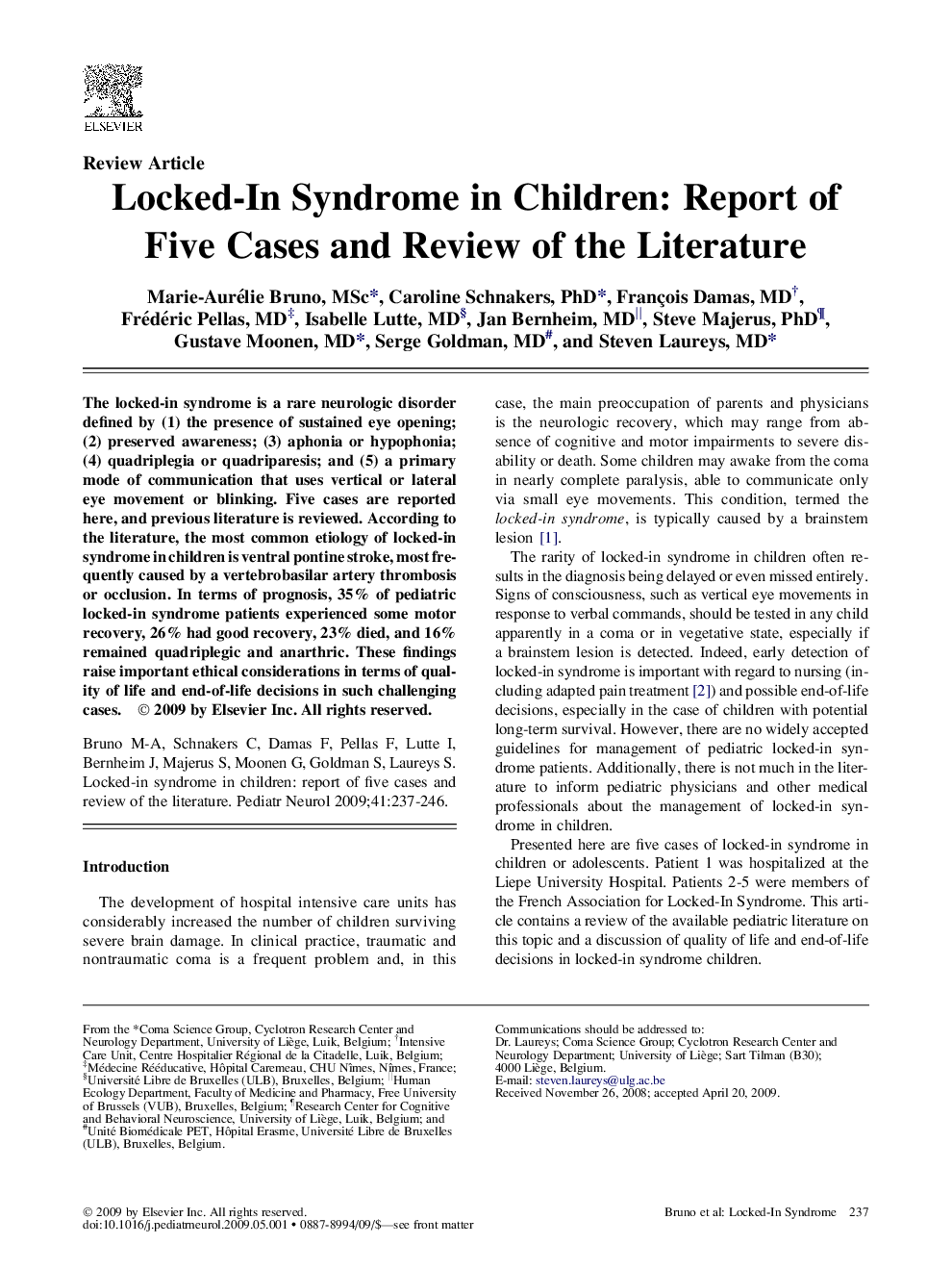| Article ID | Journal | Published Year | Pages | File Type |
|---|---|---|---|---|
| 3086021 | Pediatric Neurology | 2009 | 10 Pages |
The locked-in syndrome is a rare neurologic disorder defined by (1) the presence of sustained eye opening; (2) preserved awareness; (3) aphonia or hypophonia; (4) quadriplegia or quadriparesis; and (5) a primary mode of communication that uses vertical or lateral eye movement or blinking. Five cases are reported here, and previous literature is reviewed. According to the literature, the most common etiology of locked-in syndrome in children is ventral pontine stroke, most frequently caused by a vertebrobasilar artery thrombosis or occlusion. In terms of prognosis, 35% of pediatric locked-in syndrome patients experienced some motor recovery, 26% had good recovery, 23% died, and 16% remained quadriplegic and anarthric. These findings raise important ethical considerations in terms of quality of life and end-of-life decisions in such challenging cases.
